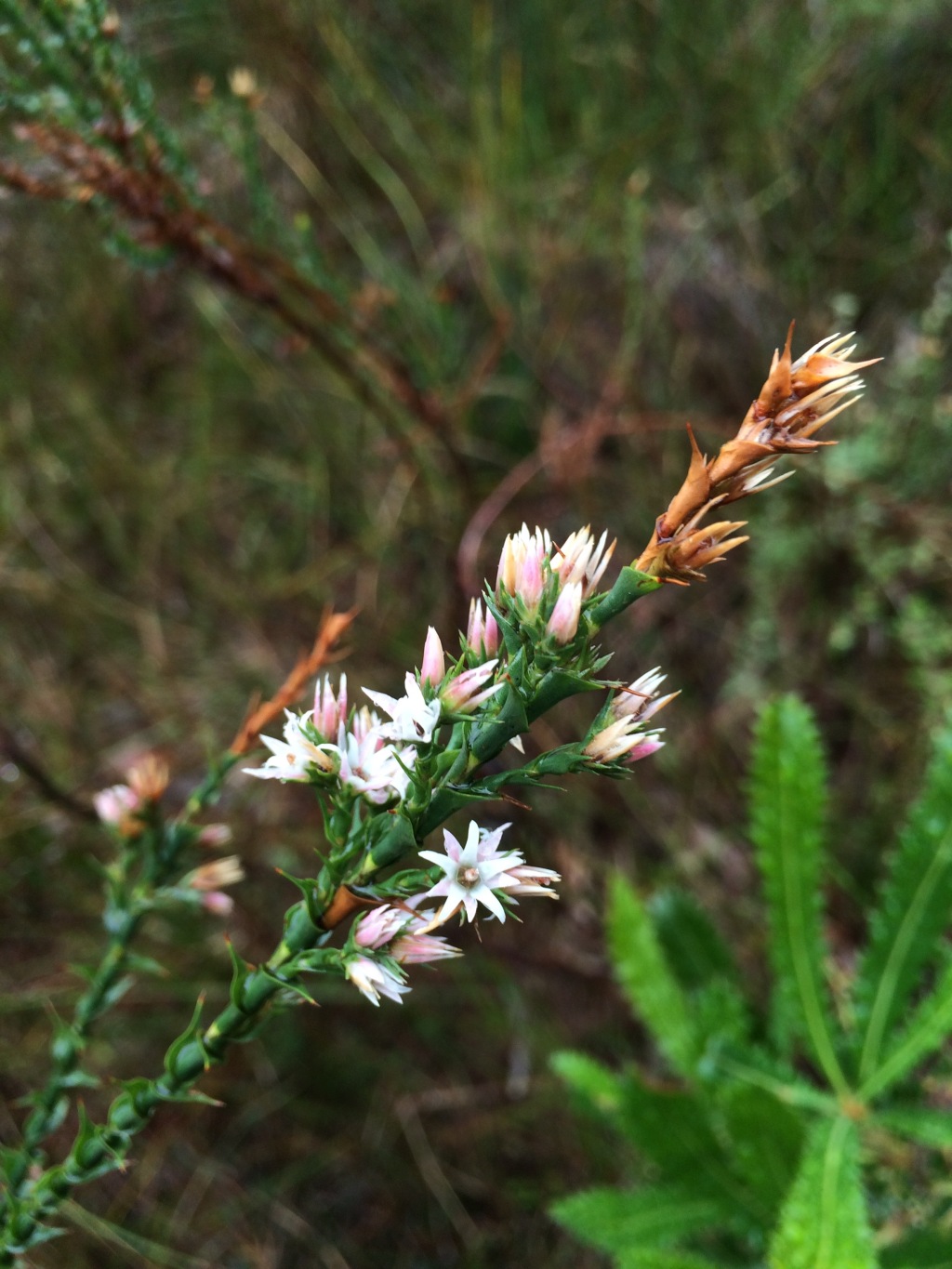Sprengelia incarnata
Sm. Pink Swamp-heathErect shrub to c. 2 m high. Leaves spreading above sheathing base, ovate to lanceolate, 3–20 mm long, 2–6(–10) mm wide, concave; apex acuminate, with mucro to 0.7 mm long. Flowers crowded in the upper 1–8 cm of stems; bracts and bracteoles collectively c. 5–10, acuminate, mucronate, ciliolate; sepals pink (occasionally white), erect to spreading, shortly united at base, narrowly triangular to lanceolate, 3.8–5.5 mm long; corolla pink (rarely white), often darker towards centre; tube 0.5–1.3 mm long; lobes narrowly triangular, 3–5 mm long, spreading at anthesis; stamens c. 3–4 mm long, anthers cohering around the style, papillose-hairy externally (very rarely glabrous), style shortly exceeding the anthers at maturity. Fruit 2–3 mm long. Flowers Jun.–Dec.
GleP, Brid, VVP, GipP, OtP, WaP, Gold, CVU, GGr, DunT, EGL, EGU, WPro, HSF, HNF, OtR, Strz, VAlp. Also SA, NSW, Tas. Occurs in wet heathland, sedgeland and other swampy vegetation on peaty or sandy soils. Typically a species of lower altitudes, but ascending to over 1000 m in the Grampians and on Mt Baw Baw.
A 1930 collection from Mt Baw Baw is atypical in its small spreading stature and short style (c. 1.5 mm long) not exceeding the anthers. This form, which also occurs in Tasmania, approaches var. montana R. Br., but differs in having papillose-hairy anthers. Several forms of S. incarnata occur in Tasmania and further study is required to determine whether segregate taxa should be recognized.
Albrecht, D.E. (1996). Epacridaceae. In: Walsh, N.G.; Entwisle, T.J., Flora of Victoria Vol. 3, Dicotyledons Winteraceae to Myrtaceae, pp. 464–509. Inkata Press, Melbourne.
 Spinning
Spinning



